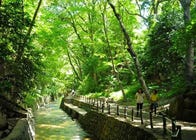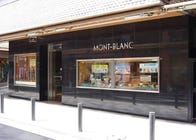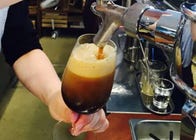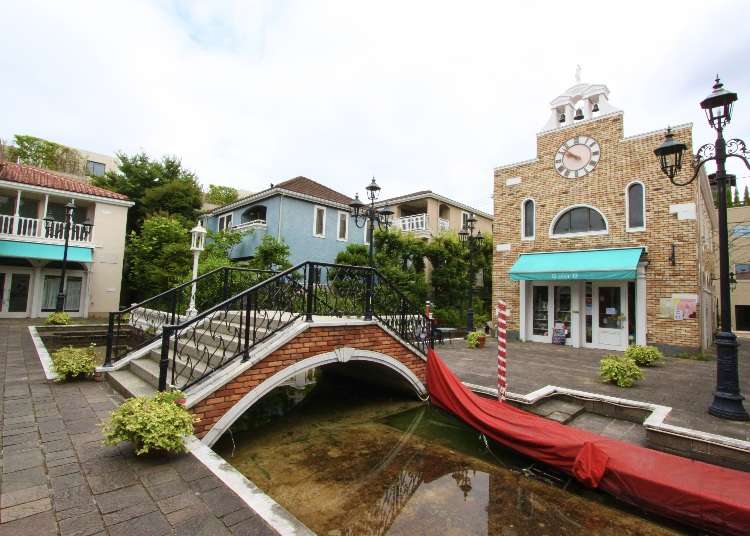
Jiyugaoka: The Ultimate Guide to The Fancy Side of Tokyo
- Written by: Cassandra Lord
In Tokyo’s southwest, just 10 minutes from Shibuya Station, you’ll find the suave and sophisticated area of Jiyūgaoka. But despite its upmarket reputation, the atmosphere is distinctly laid-back, with none of the overwhelming glitz and glamor of central Tokyo.
So let’s dive in to see what awaits you in the perfectly strollable Jiyūgaoka.
Jiyūgaoka Overview
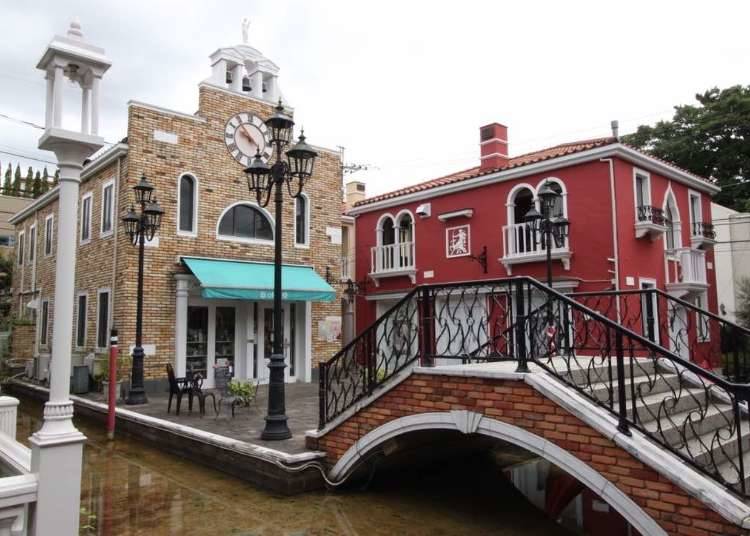
Jiyūgaoka is known for its European vibe and picturesque streets, and it has no shortage of laid-back areas for a lovely afternoon stroll.
One of the main points that travelers flock to is La Vita, a cute little square with Italian-inspired buildings complete with a manmade miniature river. But that’s just the beginning of the possibilities for a Jiyūgaoka exploration.

Just opposite the more modern La Vita is Kumamoto Shrine and Kosoan Tea House, offering a contrast to the European square with their traditional Japanese atmosphere. Closer towards the station, though, you’ll find an array of shops and restaurants.
As far as history goes, Jiyūgaoka is overall a fairly modern area, having only started to develop in the late 1920s when rail services were introduced. Its name, “Jiyūgaoka”, meaning literally “Freedom Hill”, came around the same time, when a school that was part of the liberal education movement opened up.
The school was called “Jiyūgaoka Gakuen Kōtō Gakkō”, which is said to be where the nearby station got its name, and eventually the area as a whole. The name Jiyūgaoka was only officially adopted for addresses in the 1930s.
Knowing all that, it’s understandable that Jiyūgaoka is not swimming in ancient Japanese history, but has a more modern air to it that attracts a fashionable crowd.
What to do in Jiyūgaoka
Jiyūgaoka is an elegant town with sophisticated shops, restaurants, and scenic areas that make for a relaxing time exploring. From knick-knacks and camera goods to vegan takes on traditional Japanese cuisine, this area has it all, so let’s take a look at some of the best places to visit on a day out in Jiyūgaoka.
Attractions and activities
La Vita

Set up in 1990, La Vita is the little slice of Europe that has become an iconic part of Jiyūgaoka. The small square is the perfect place to start your adventure in the area, as its beautifully decorated buildings and miniature river make for a great photo spot.
Taking the word for “life” in Italian, La Vita’s concept is of light, air, water, and greenery, or earth. The open space lets you feel the sun on your skin and makes for a good breather during your travels.
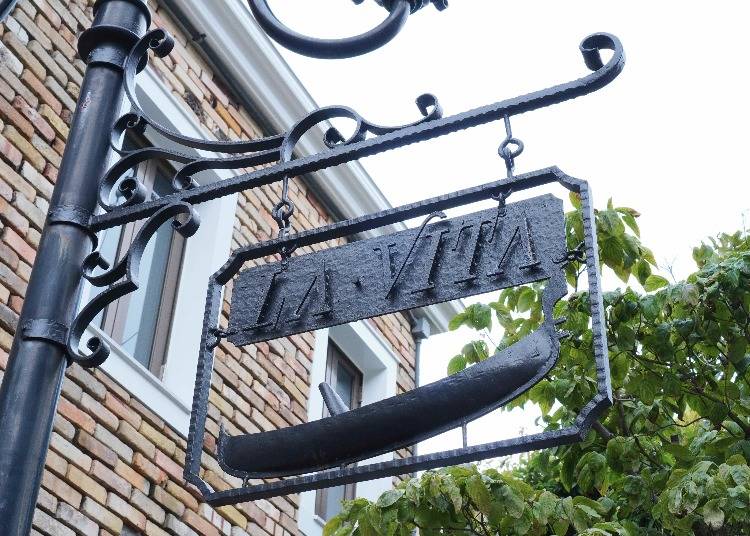
When La Vita was first created, the locals were hesitant about the design and didn’t consider it a good fit for the area. But after a while, people began to create buildings inspired by La Vita’s design. Before long, the surrounding area had become a picturesque place to walk around, so take the time to wander for yourself and discover the little nods to European architecture around the area.
Green Street and Marie Claire Street
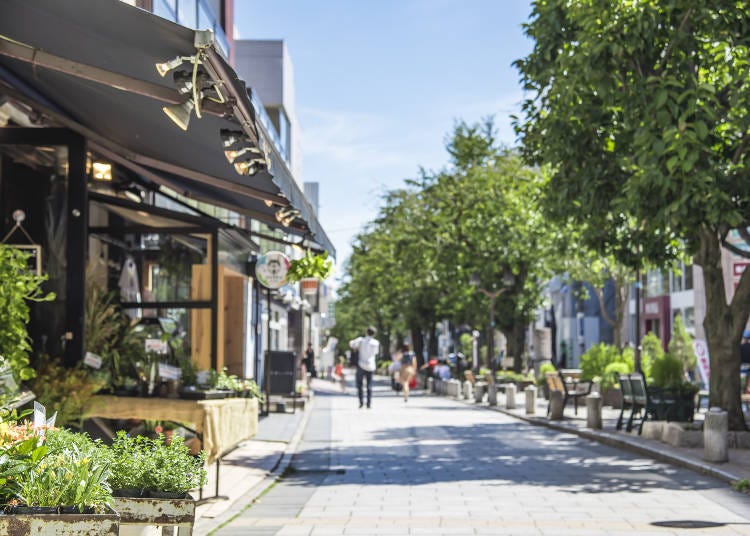
In Jiyūgaoka, two of the nicest streets to go for a stroll are Green Street and Marie Claire Street. Green Street is so named for its luscious green trees that line the entire promenade of this former river. In the area closest to the station, you’ll find a variety of shops and benches to take a rest, but it stretches on into more residential areas too.
Marie Claire Street, on the other hand, is a shopping street aimed mostly at women, with high-end boutiques and salons to get your fashion fix. Both are pedestrian friendly and are a good place to relax amidst your Jiyūgaoka explorations.
Kumano Shrine

Jiyūgaoka is known for its European atmosphere, but Kumano Shrine offers a serene piece of the more traditional side of Japan.
It took its current form as recently as the 1900s, with the main hall being built in 1909 and the worship hall later on in 1967. It was made using the trees that were available on the grounds.
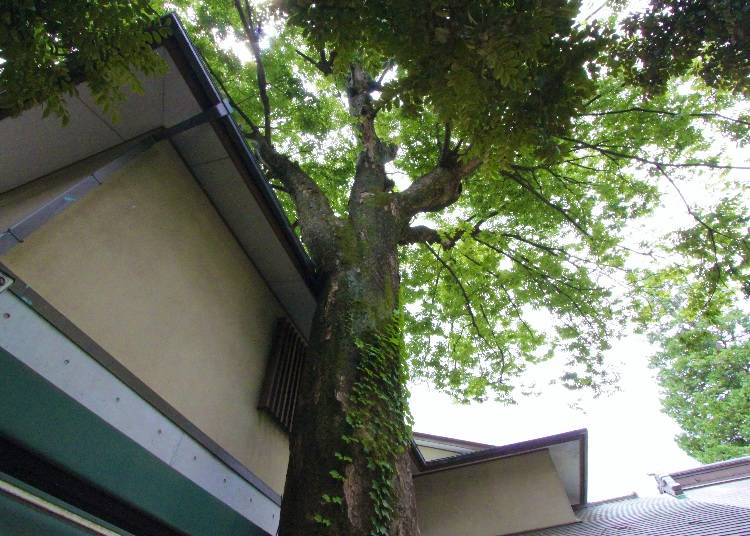
All the trees on the shrine grounds are considered sacred, but one is particularly revered. That is the large keyaki or Japanese zelkova tree that grows right in front of the shrine office. It is said to be almost 200 years old.
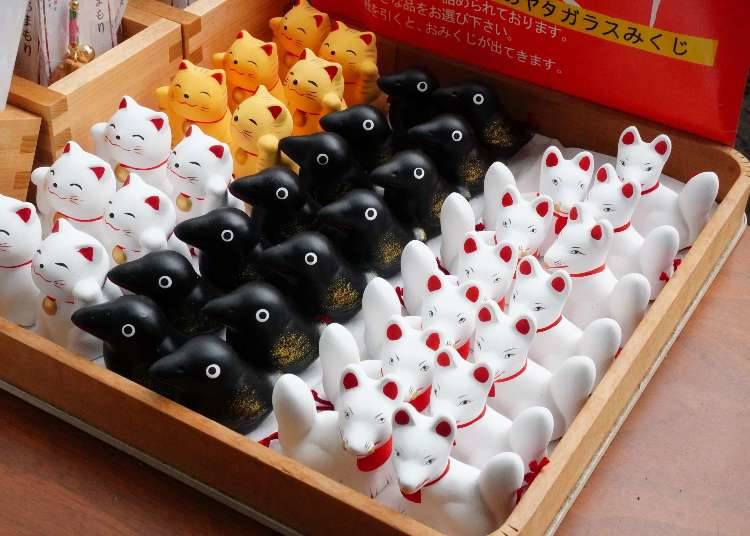
You might also notice crow motifs in some of their charms and other items for purchase, and this is called the yatagarasu, which is said to have led Emperor Jimmu when he lost his way.
The shrine is visited for its help with many things, such as relationships, driving safety, and safe births. It is a small but peaceful shrine, offering a quiet space away from the bustling shopping streets.
Shops
Today’s Special

Today’s Special in Jiyūgaoka is a warm and welcoming shop selling all sorts of lifestyle goods, all under the theme of “food and lifestyle DIY”.
Your very first thought on seeing the words “Today’s Special” is likely of a specialty on a restaurant menu, and that is no accident. Part of the reasoning behind the name is that, much like a restaurant that changes its offerings with the seasons, so too does this shop. But the name is also a bit of a play on words, meaning “today is special”.

The idea of the shop is to try out different things in different seasons, and if you like to create or decorate in your own way, this is a great stop for you.
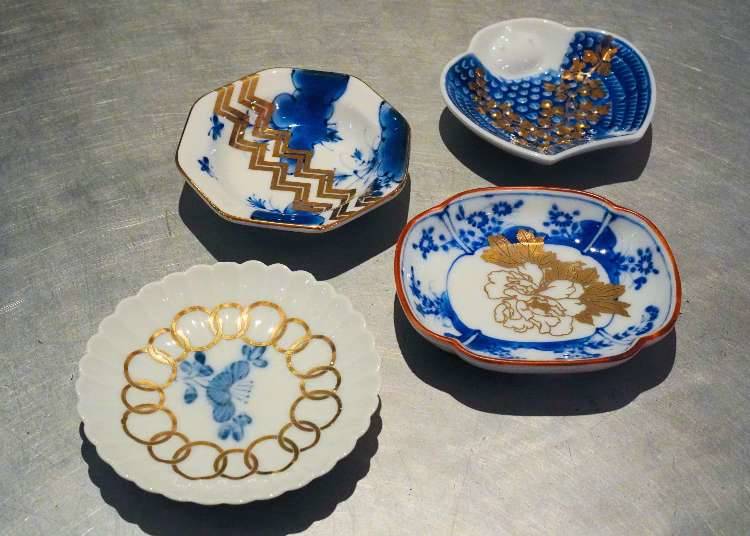
There are so many things to choose from, but what comes highly recommended are the mamezara, small dishes traditionally used for the bean portion of a meal. Of course, you can use them for anything you like. Their small size means you can wrap them up nicely and fit them into your suitcase or carry-on without worrying too much about them breaking. The dishes are made in the Hizen district of Arita (in what is Saga Prefecture today), a well-known area for Japanese ceramics. The artisans take the traditional patterns of old and apply them to new and modern designs, making for beautifully crafted individual pieces.
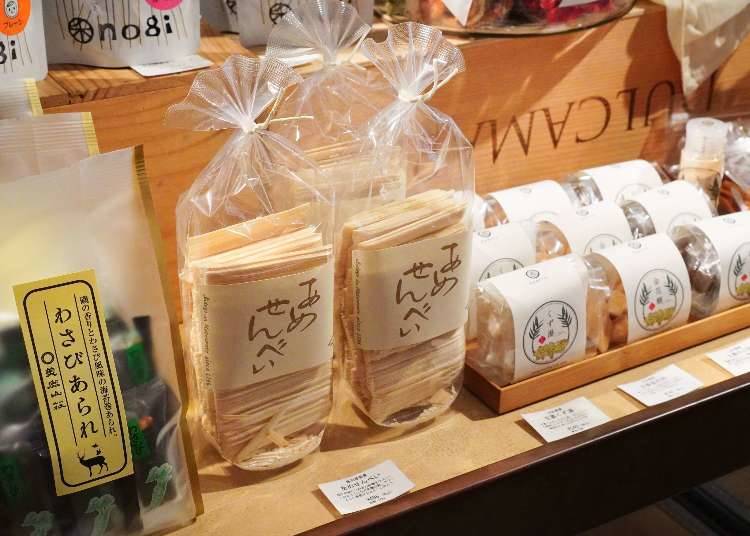
If you’re in more of a snack mood, though, you might want to try their Ame Senbei. Where senbei are usually savory rice crackers, these are made by Iidaya, a long-established confectioner. So, of course, these senbei are sweet! The sweet senbei have the familiar crunch of the rice crackers, but feel almost like a wafer that accompany the rich flavor.
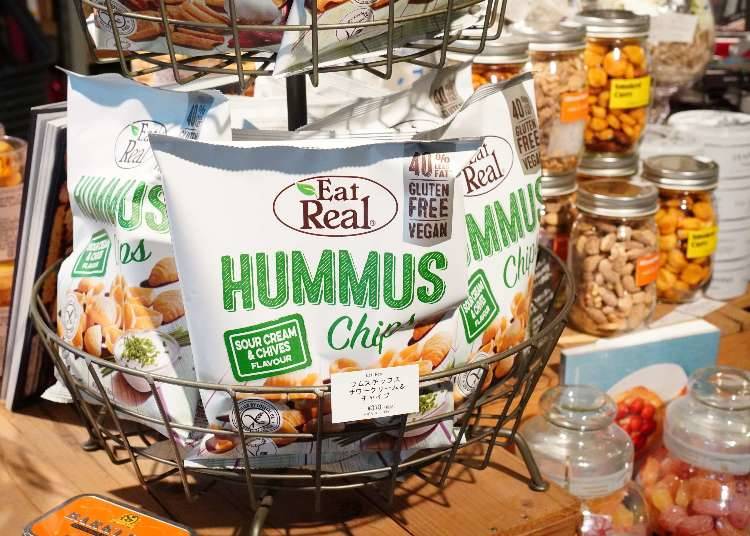
They also have a few imported goods, so if you live nearby and want something you can’t get elsewhere, have a look around. As a Brit myself, I was surprised to find these hummus chips here!
-
Today’s SpecialToday’s Special
- Address 152-0035 Tokyo, Meguro City, Jiyūgaoka, 2 Chome−17−8 (Floors 1&2)
- Phone Number 03-5729-7131
・Hours: 11:00 a.m. – 8:00 p.m. daily
・Website: https://www.todaysspecial.jp/storelocator/index/view/id/1/
・Multilingual Support: None in particular; Credit cards accepted.
Popeye Camera
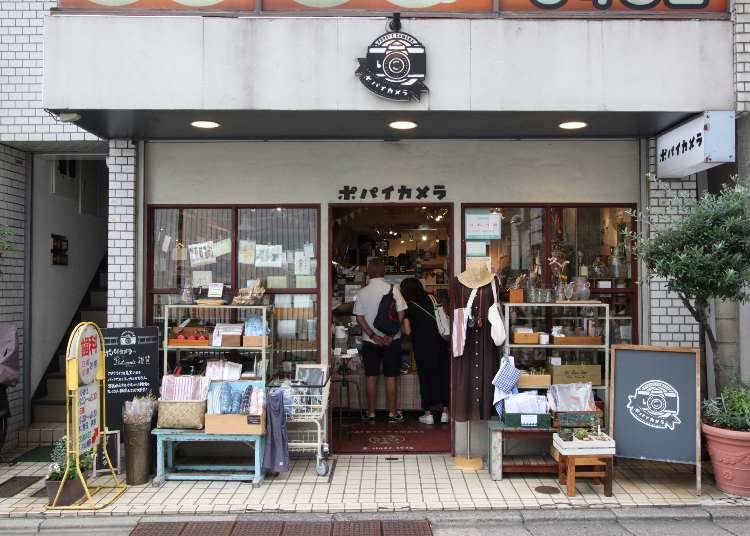
For the camera fanatic, Popeye Camera is like a breath of fresh air from the larger multi-floor electronics stores around every corner of Tokyo. With its wooden interior, the small shop focuses on single-use and film cameras, as well as offering an array of aesthetically pleasing original camera accessories.
The shop was founded in 1936. They originally worked in international trade, but moved to cameras after the war, as Jiyūgaoka was known as a place of academics and scholars, so the founder thought there might be a need.
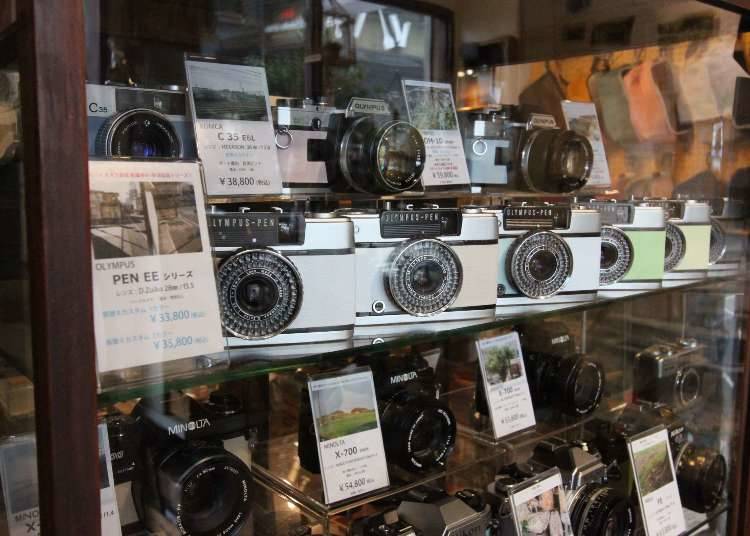
The name comes from the good old Popeye character. The phrase “Ude ga ii” in Japanese means skilled, capable, or generally “good”. But it also literally means “good arms” or “strong arms” like Popeye, so to represent the fact that their cameras were “ude ga ii”, Popeye seemed like a good choice.
The shop wants to encourage the spread of film camera culture to as many people as possible, and show them the different types of pictures and memories they can create. Where they source their vintage and second-hand cameras is a closely guarded secret, but every single camera is meticulously checked for functionality before selling, and they are all sourced from within Japan.
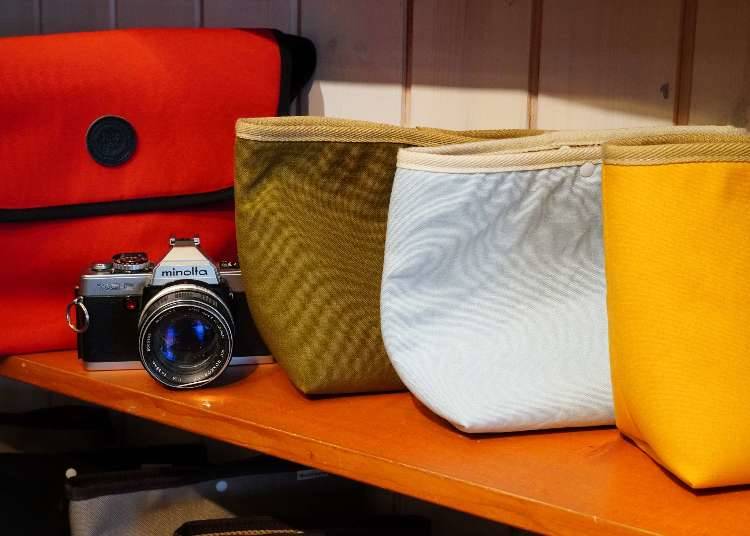
Toyama-san, a staff member at Popeye Camera, recommended their original “inner pouch” camera bags. These are simple but stylish bags made specially to protect your camera when you carry it around in another bag. This could be really useful if you are already carrying a backpack and don’t want a separate camera bag, but also don’t want your camera to get damaged by other items. The bags have a nice soft lining but are sturdy on the outside.
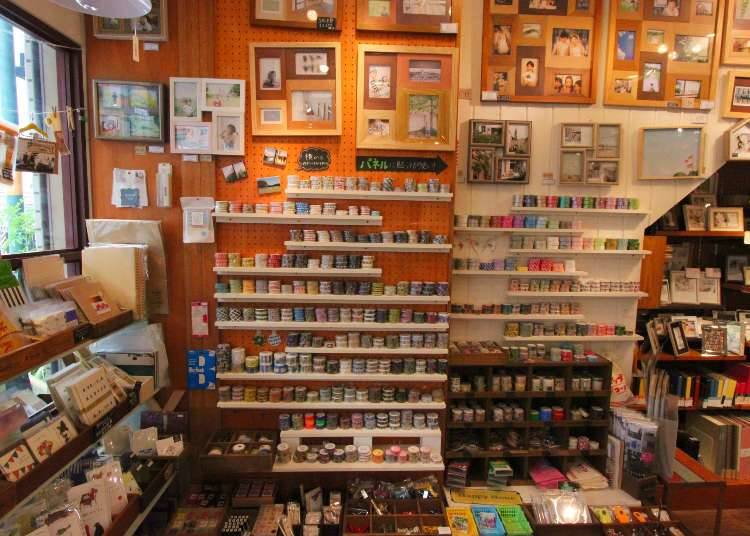
They also have plenty of sizes for their pouches, as well as full-on bags with shoulder straps, camera straps, cameras, photo frames, and other fun items and accessories to complement your photography lifestyle.
-
Popeye Cameraポパイカメラ
- Address 2 Chome-10-2 Jiyūgaoka, Meguro City, Tokyo 152-0035
- Phone Number 03-3718-3431
・Hours: Noon – 7:00 p.m. daily
・Website: http://www.popeye.jp/
・Multilingual & International Support: None in particular. Credit cards accepted.
Hotch Potch
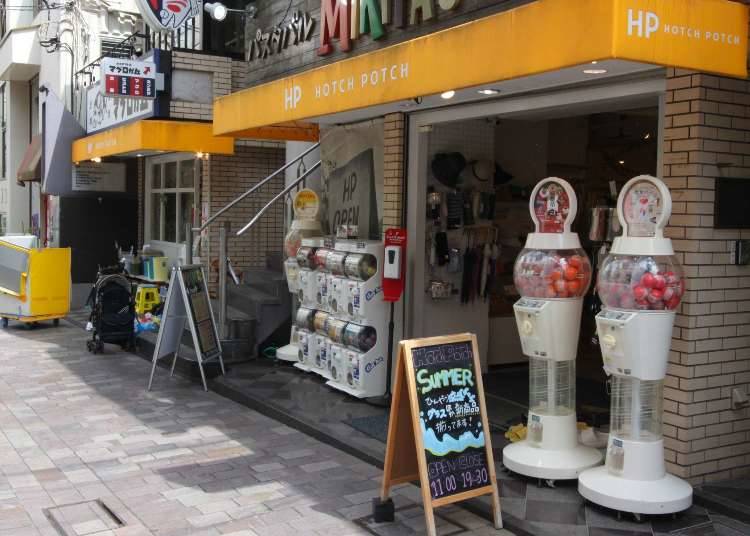
Hotch Potch is a shop for adults and children alike, with a more sophisticated home section on one side and a more energetic children’s section on the other.
The name comes from the British-English term meaning a mess or jumble of things. The inspiration for the name stems from the idea of turning over a treasure chest or toy box and finding a whole variety of different items.

But despite the hotch potch of items to be found throughout, the store carefully selects each item to add a little happiness to each customer’s day. Each item is chosen to create a little excitement, emotion, or fancy. And that certainly comes across walking through the store, as you might spot anything from a unique piece of jewelry to the friendly face of a cuddly toy.
Their handmade accessories come highly recommended, and there are time-limited sales on these items on a monthly basis. They offer something completely different from the ready-made products you might find elsewhere.
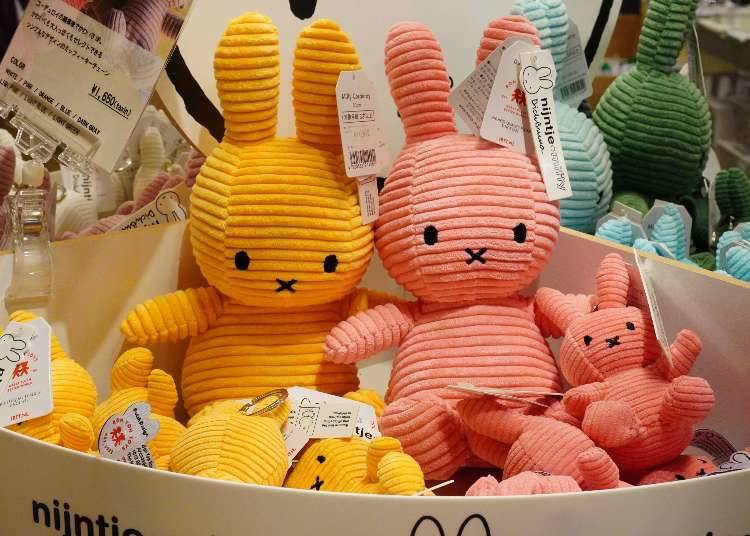
If you like Miffy, you’ll be pleased to know there’s a small Miffy section with a variety of cuddly toys.
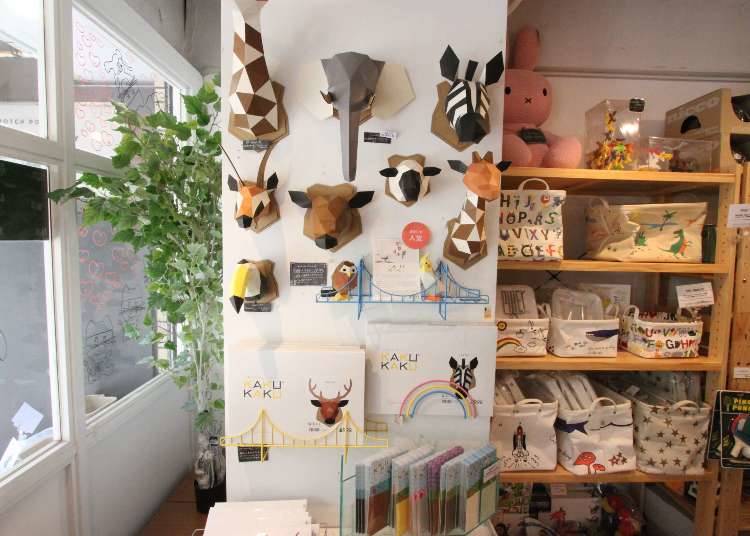
There is also a selection of creative and fun toys for kids, as well as gacha-pon outside the front door, where you can get your hands on cute miniature figurines.

Come prepared, because you might just end up wanting to buy everything in sight!
-
HOTCH POTCH JiyūgaokaHOTCH POTCH 自由が丘店
- Address 1 Chome-26-20 Jiyūgaoka, Meguro City, Tokyo 152-0035
- Phone Number 03-3717-6911
・Hours: 11:00 a.m. – 7:30 p.m. daily
・Website: http://www.hpjiyuugaoka.jp/
・Multilingual & International Support: Credit cards accepted; Wheelchair/stroller accessible; Contactless payment; Response to SDGs
Waterfront JIYUGAOKA
Step into a world where umbrellas take center stage! This new entertainment building in Jiyugaoka, Tokyo is bursting with color and creativity—literally, from the first to the fourth floor. With 10,000 umbrellas in about 500 styles, from sleek auto-openers to quirky gun-shaped handles, it’s not just shopping—it’s a full-blown umbrella wonderland!
Restaurants
Potato Cream

Potato Cream is a unique restaurant that offers you exactly what you’d expect – potato cream. But what exactly is that?

At its core, this original dish is made up of potatoes boiled and hand-mashed every day, and served with cream. But the menu is made up of various different flavor options, some of which change with the seasons. The dish is served warm, in a small plastic bowl with a spoon. They add plenty of vegetables and other ingredients, so although the food is served fast and is easy to eat, it’s also wonderfully nutritionally balanced.

When we visited, I tried their Gorgonzola Potato Cream (650 yen, tax incl.). Every part of it was perfectly cooked, and surrounded by a warm creamy sauce. In it, there was chicken, edamame, and a few other greens, as well as the delicious mashed potato, which I was told were domestic potatoes from Shizuoka. However, in winter, they switch these for a Hokkaido brand called Kita Akari.
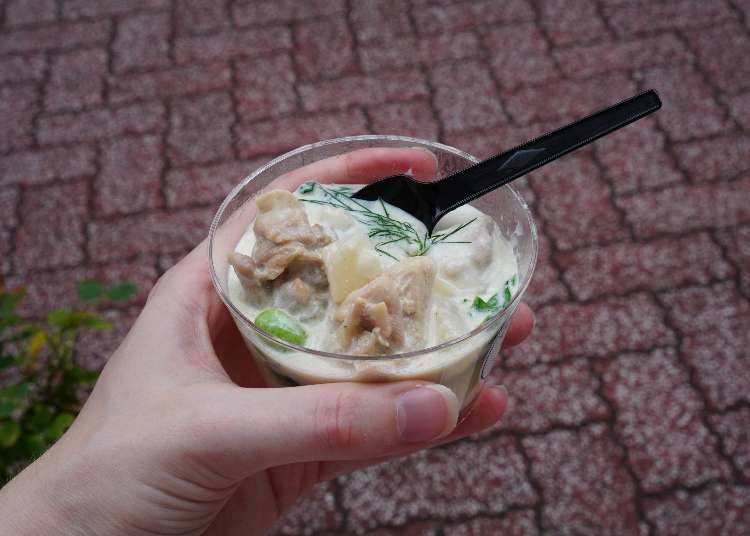
Overall the dish was warm and comforting, creamy and savory, and had just the right amount of seasoning. The blue cheese flavor was not at all overwhelming, as blue cheese is not a flavor everyone can handle! It’s one of their most popular menu items, and repeat customers love it.
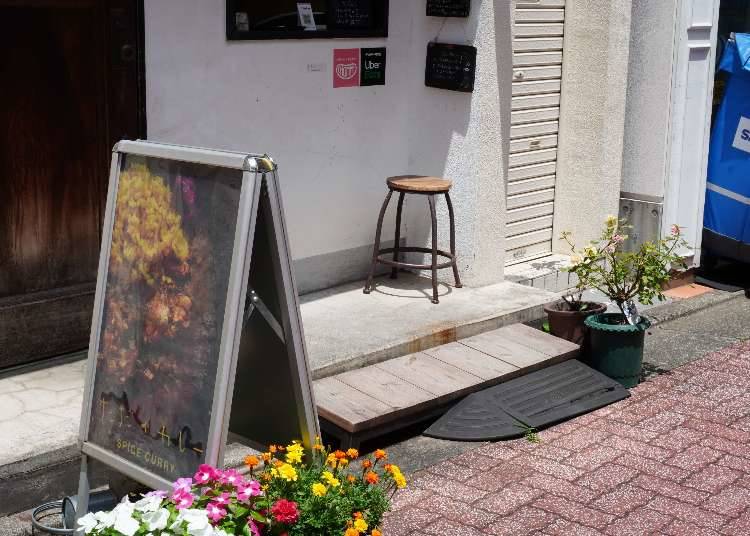
The dish is best eaten while still warm, so you can eat in their indoor standing space, pull up a chair outside the take-out stand, or head to one of the benches on Green Street, AKA ryokudō.
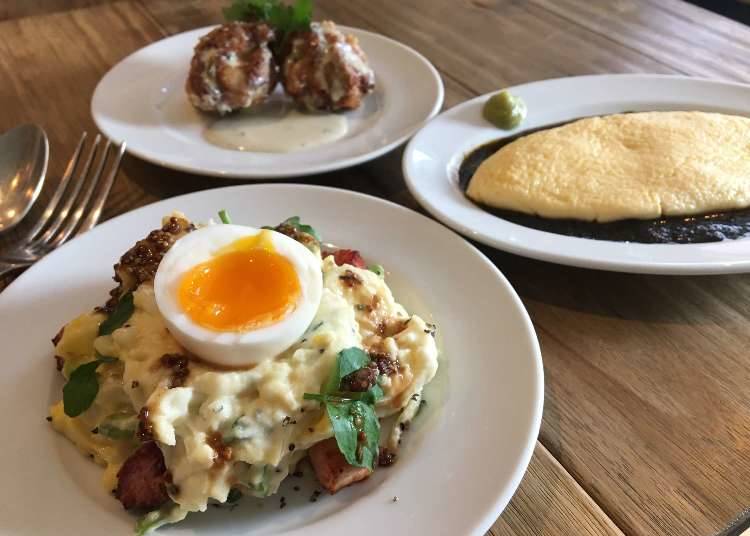
If you’re not feeling in a potato mood, though, you can also try out their new “tada no kare”, which literally means “just curry”! It was made in collaboration with Koushindo, a Jiyūgaoka spice shop, and has been a hit so far. They’ve also recently started a “Yoru” evening service, with more substantial meals like pastas and risotto, and alcoholic drinks to try at their standing bar.
-
Potato CreamPotato Cream
- Address 1 Chome−25−2 1F, Jyugaoka, Meguro City, Tokyo 152-0035
- Phone Number 03-3725-0222
・Hours: 11:30 a.m. – 6:00 p.m. (Thurs – Tues)
“Yoru” Hours: 5 p.m. – Midnight (Daily)
・Closed: Wednesdays (evening open)
・Website:
http://facebook.com/PotatoCream
https://www.instagram.com/potatocream1214/
https://www.instagram.com/potatocreamyoru/
・Multilingual & International Support: Limited language support; Credit cards accepted; Contactless payment; Response to SDGs
Tea House Kosouan
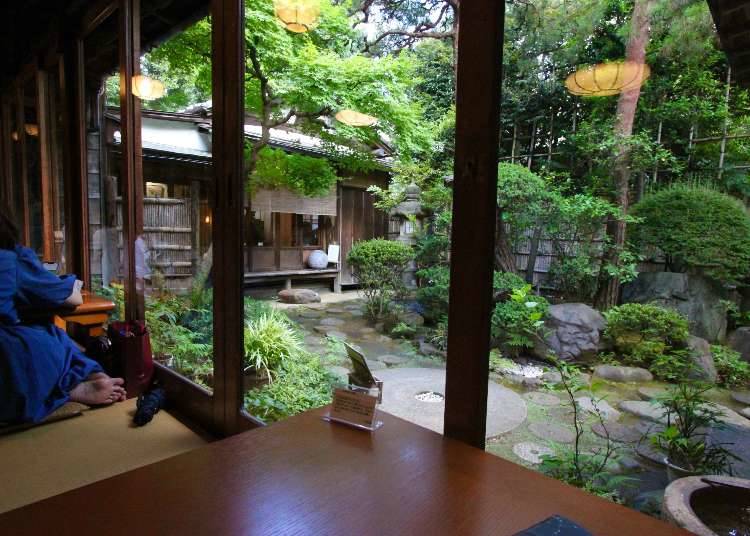
Amidst the westernized aesthetic of the rest of Jiyūgaoka is a little corner of Japanese tradition. Located right by Kumano Shrine, Tea House Kosoan is a beautiful place to sit on tatami mats and sip green tea while the world goes by.

The tea house itself opened in 1999, but the building was created in 1954 by Mr. Watanabe. It was then named by reknowned author Natsume Soseki’s son-in-law, Matsuoka Yuzuru. The name, Kosouan (古桑庵), literally means “old mulberry retreat”, and around the foundations of the building, you can still see the gorgeous mulberry wood lining the walls.
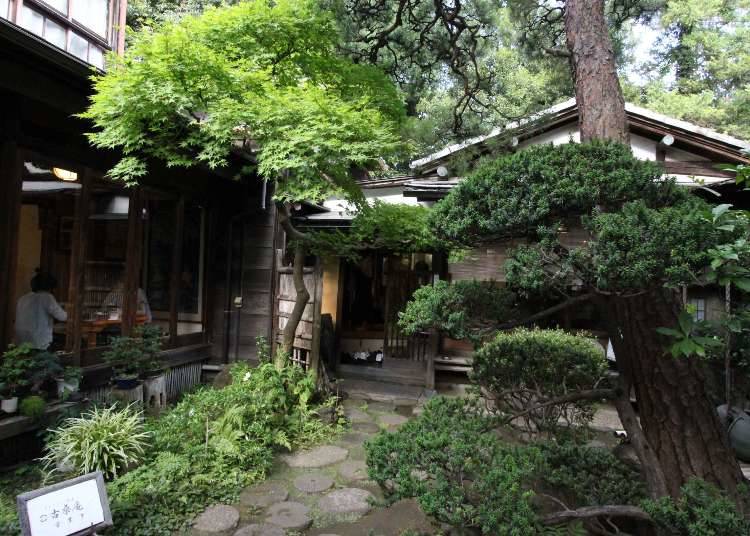
Talking to Mrs. Nakayama, granddaughter of Mr. Watanabe and second-generation owner of the tea house, she mentioned that her mother opened it with the idea of creating a space that felt as comfortable as inviting people over for tea. This rings true in the serene yet laid-back atmosphere inside, as you must first remove your shoes before entering, much like when entering a house in Japan. Then you are greeted by cushions on tatami, so you can sit comfortably on the floor, without feeling restricted – within reason! Don’t go lying around on the floor as if it’s nap time…
Of course, this isn’t the only restaurant with tatami flooring in Japan. It’s a well-established custom that you might come across elsewhere, but these days with the rise of fast food and busy schedules, they are certainly harder to come by.
As for the menu, they stick to a reliable, traditional menu throughout the year, with only some minor changes with the seasons, such as their additional amazake (a sweet rice drink with no alcohol) in winter.
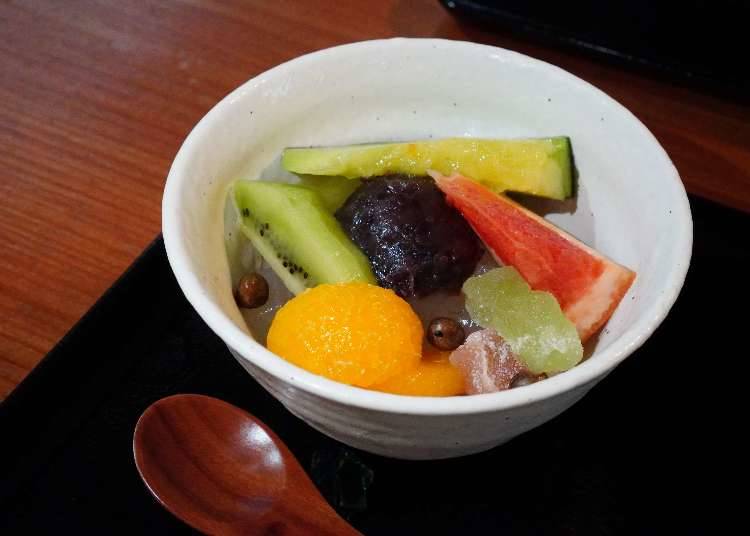
First I tried out their anmitsu (1,000 yen set with small tea, tax incl.), a dessert dating back to the Meiji period, that comes with cubes of agar jelly, red bean paste, fresh fruit, and syrup.
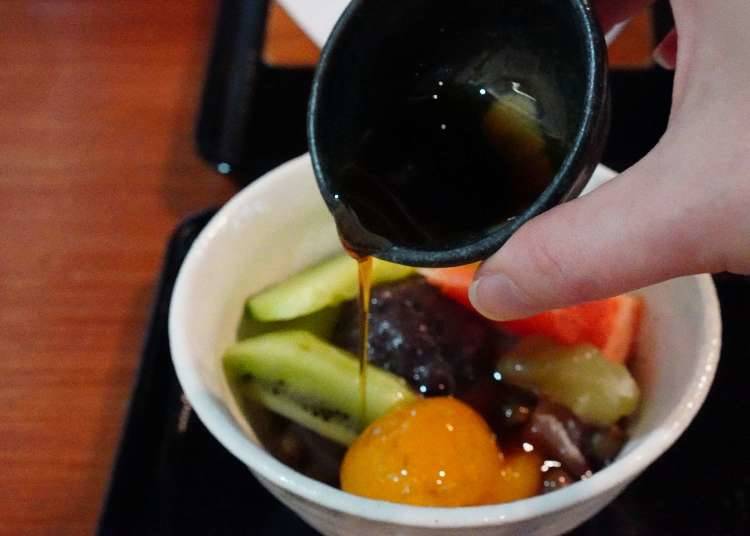
I poured the syrup on, and my sweet tooth was satisfied, but without being overwhelmed.
As it was summer when I visited, the bowl was filled with delicious summer fruits, like kiwi and melon. I also found some delicious gummy-like treats in there too!

Their matcha items also come highly recommended, so of course we had to give them a go. The matcha set is separate from the desserts, at 1,000 yen (tax incl.).

It came as per tradition in a large chawan (tea cup), with a small Kyoto-style sweet on the side.
The matcha was smooth and warm, and made me want to sit in the tea house sipping tea until the sun went down.
But alas, it was time to move on to the last spot of the day, which I had been eagerly anticipating.
-
Kosouan古桑庵
- Address 1 Chome-24-23 Jiyūgaoka, Meguro City, Tokyo 152-0035
- Phone Number 03-3718-4203
・Hours: Noon – 6:30 p.m. (from 11:00 a.m. Saturday and Sunday)
・Closed: Wednesdays
・Website: http://kosoan.co.jp/
・Multilingual & International Support: Menu available in English; Credit cards accepted; Contactless payment accepted; Wheelchair/stroller accessible; Support for dietary requirements and allergies; Response to SDGs
Saido

If you’re a vegan or vegetarian in Japan, you’ll know that it can be quite a challenge to find a good spot for a decent meal, unless you’re happy to settle for a salad of lettuce and… cabbage. Thankfully, that is starting to change, and even as a non-vegetarian myself, Saido has quickly become one of my favorite Tokyo restaurants that I can’t wait to revisit.
The name Saido (菜道) literally means “vegetable road”, or perhaps more poetically, “the way of the vegetable”. Its name was purposefully chosen to sound very Japanese, as their entire line-up consists of delicious Japanese classics turned vegan. The idea is that you set foot on the gourmet path, and from starter to dessert, enjoy the journey.
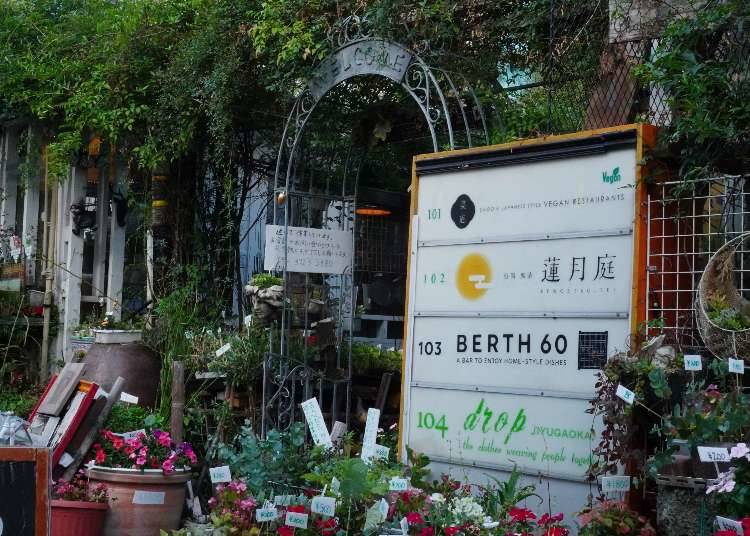
Every single item on Saido’s menu is 100% plant-based and vegan, with no animal products or by-products. They even avoid “gokun” items, which are not eaten in Buddhist temple cuisine. These are pungent plants such as garlic, onion, and leek. By doing so, they can cater to almost any religion, and everyone is able to eat at the same table.
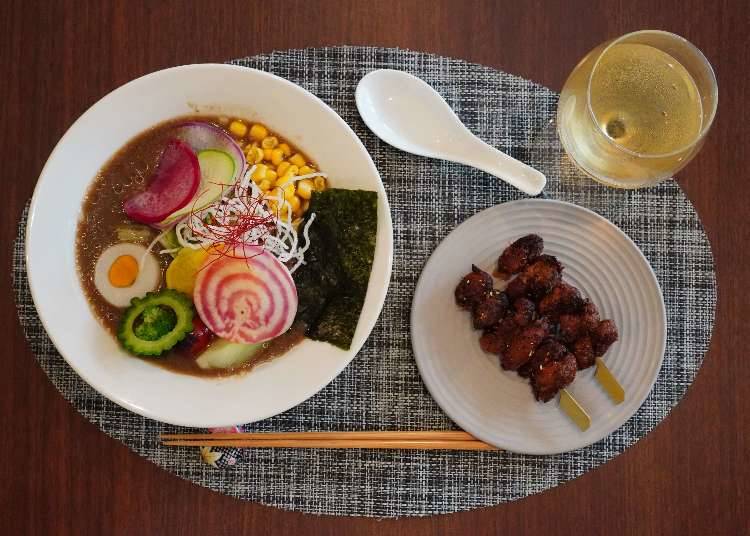
Knowing that, it is all the more impressive that they are able to create such incredibly delicious meals without so many classic Japanese ingredients. To get a good idea of their menu, I tried out their ever-popular ramen, and their “yakitori”. Yakitori literally means grilled chicken, so of course, I was intrigued as to what they had replaced the meat with.
For the ramen, I was able to choose my noodles. I was a tad overwhelmed by the choice, but went for the Chlorella option, which is high in vitamins and fiber.

The noodles sprung back like regular egg noodles but had a more vegetal taste.

The ramen was filled to the brim with seasonal vegetables and even a fake egg to top it all off!
There were little mushrooms in place of minced meat, and the soup was thick and deep. Overall, it was completely packed with umami and the noodles went very well. There was even a hidden piece of fresh bamboo which was a pleasant surprise, and offered a satisfying change of texture.
Despite how healthy the ramen looked, it was definitely a satisfying bowl of ramen!
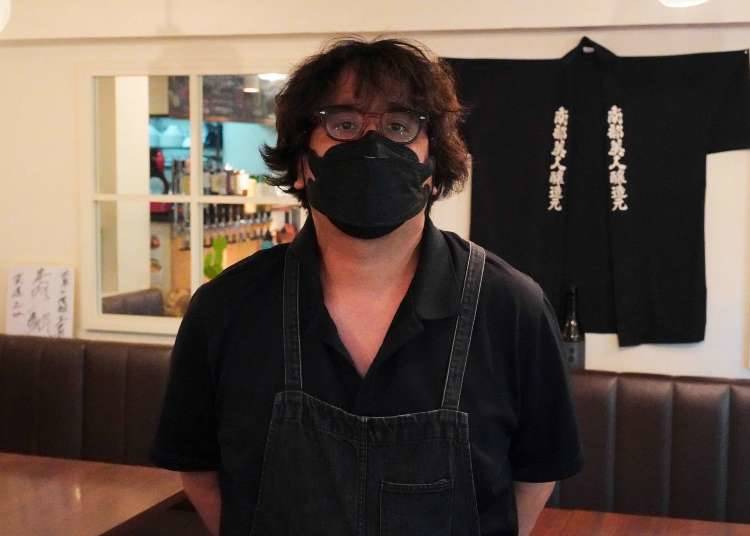
As for the yakitori, the only thing that was unsatisfied was my curiosity, as the chef, Kusumoto san, kept the ingredients a closely guarded secret. However, he did tell me that it was made from neither daizu meat nor jackfruit… So what could it be?!

Either way, it was surprisingly delicious, with a grilled, charcoal flavor and wonderful lightly spiced seasoning. And it had far more of a toothsome texture than many other meat substitutes on the market.
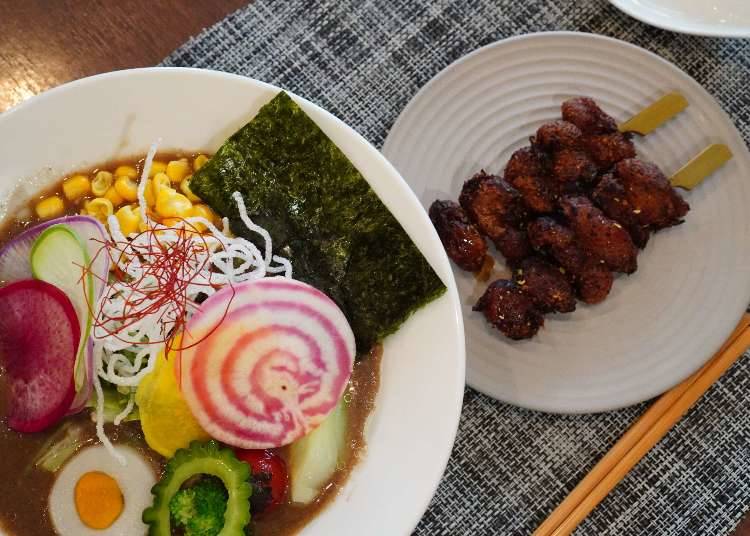
These delicious dishes were all created to allow everyone to get a taste of authentic Japanese food, no matter what your dietary restrictions or beliefs. So get everyone round the table, because this is a meal to remember!
-
Saido菜道
- Address 2 Chome-15-10 Jiyūgaoka, Meguro City, Tokyo 152-0035
- Phone Number 03-5726-9500
・Hours: Lunch 11:00 a.m. – 2:00 p.m., Dinner 6:00 p.m. – 8:00 p.m. Thurs - Tues
・Closed: Wednesdays
・Website: https://saido.tokyo/
・Multilingual & International Support: Menu and website available in English; Staff speak some English; Phone and online reservation available in English; Free Wi-Fi; Credit cards accepted; Contactless payment; Smoking area available; Wheelchair/stroller accessible; Support for dietary requirements and allergies; Response to SDGs
How to get to Jiyūgaoka
The easiest way to get to Jiyūgaoka is on the Tokyu Toyoko Line from Shibuya Station. It takes 8-12 minutes, depending on whether you get the local or the express train.
Walking south out of the station will take you to Green Street, whereas walking northwest up Gakuen Dori will take you to La Vita. The shops and restaurants outlined in this article are all located between the station and La Vita.
Cassandra Lord is a British journalist specialising in food, travel, and culture, and has been in Japan for five years after studying Japanese at Edinburgh University for four. With a year of experience as co-editor for LIVE JAPAN, Cassandra has since transitioned to freelance writing, contributing to a variety of platforms including The Japan Times and Tokyo Weekender. During her time in Japan she has visited 25 prefectures, with a goal to eventually visit all 47. She also manages her own YouTube channel, "Cassandra Lord", which is dedicated to all things related to Japanese culinary culture. She also works as a translator and photographer.
- Area
- Category
*Prices and options mentioned are subject to change.
*Unless stated otherwise, all prices include tax.
Popular Tours & Activitiess
Recommended places for you
-

First Japan Cherry Blossom 2026 Forecast Announced! Here's When & Where to See Sakura in Japan
-

How to Get Don Quijote's Exclusive 2025-2026 Winter Gift (+Tax-Free Savings)
-

Strawberries, Style, and Tokyo’s Coolest Neighborhood: Winter Afternoon Tea in Kichijoji
by: Guest Contributor
-

Jujutsu Kaisen Takes Over JR East With a Wrapped Shinkansen This Winter
by: Guest Contributor
-
Ad

(Opening in Jan 2026) 'THE SUMO LIVE RESTAURANT HIRAKUZA GINZA TOKYO!' 5 Exciting Ways to Experience the World of Sumo!
-
Ad

Discover the "Miraculous Forest" in the Heart of Tokyo: The Institute for Nature Study (9 Minutes from JR Meguro Station)
Inspiration for Accommodations
-

Enjoy Mt. Fuji from the Comfort of Your Room! Recommended Ryokan with Mt. Fuji View
-

Stay Near the Cherry Blossoms! Hotels for Cherry Blossom Viewing in Tokyo
-

Family-Friendly Hotels with Free Shuttle to Disneyland: Convenient Access for a Magical Stay
-

Top Ranked Hakone Hotels with Mt. Fuji View: Enjoy Stunning Scenery from Your Private Space
-

Convenient Tokyo Hotels with Airport Shuttle: Ideal for Families and Heavy Luggage
-

Stunning Tokyo Tower View Hotels: Enjoy Spectacular Scenery from Your Private Space
-

Convenient Asakusa Hotels with Kitchens: Ideal for Extended Family Visits
-

Experience Luxury: Hakone's 10 Best Five-Star Accommodations
-

Enjoy Mt. Fuji Autumn Leaves! Top Hotels Near the Popular Autumn Leaves Corridor
-

Experience Hakone Fall Foliage from Your Room with Stunning Views
-

Shibuya Crossing: Getting the Best View from the Deck at Magnet by Shibuya109!
-

Beyond the Guidebook - 5 Expats Share Their Favorite Secret Spots in Tokyo!
-

Why These 20 Japanese Cities are Blowing up on Instagram
by: Lucio Maurizi
-

Tokyo 1 Day Itinerary: Best Sightseeing Spots the Guidebooks Won't Tell You!
by: David McElhinney
-

What to Pack for Japan: 8 Essential Things for a Hassle-Free Trip
-

Osaka VS Tokyo: Which Japanese City Is Worth Visiting First?
by: Joe Turner
- #best ramen tokyo
- #what to buy in ameyoko
- #what to bring to japan
- #new years in tokyo
- #best izakaya shinjuku
- #things to do tokyo
- #japanese nail trends
- #what to do in odaiba
- #onsen tattoo friendly tokyo
- #daiso
- #best sushi ginza
- #japanese convenience store snacks
- #best yakiniku shibuya
- #japanese fashion culture
- #best japanese soft drinks














